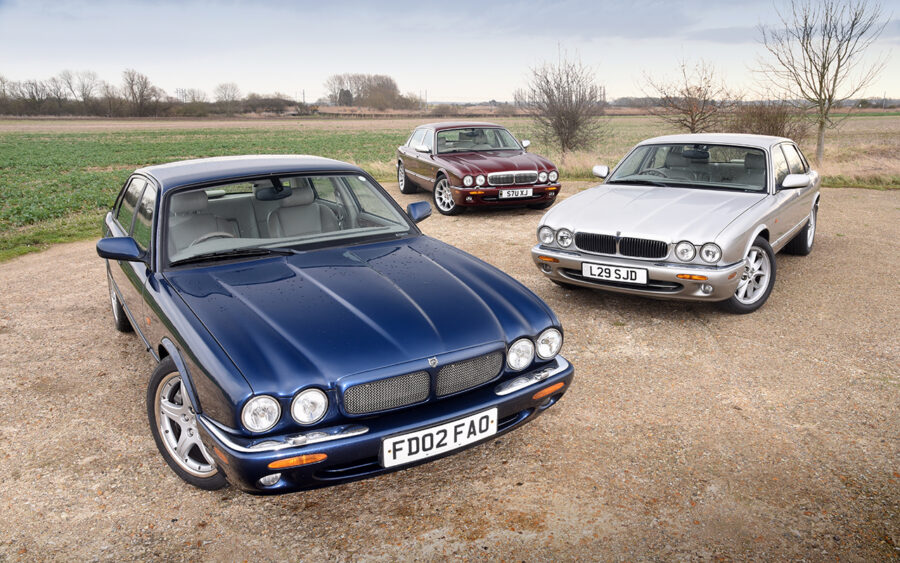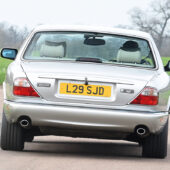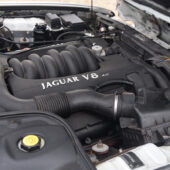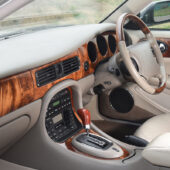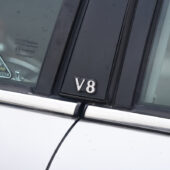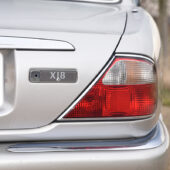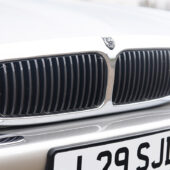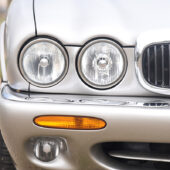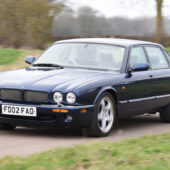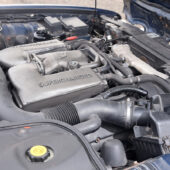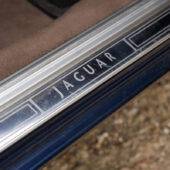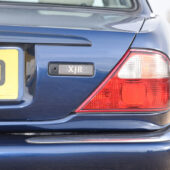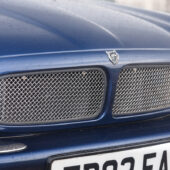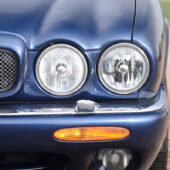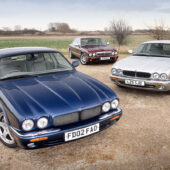Traditional yet modern and with a powerful engine, the X308 XJ8 would become one of the best-selling generations of XJ. We look at the Jaguar XJ8’s history and what made the car so popular
Words: Paul Walton
Unlike the usual mindless marketing hype that can often fill car brochures, the material for the XJ8 from 2000 was uncharacteristically spot-on when it described the saloon as “elegant, sophisticated with quiet, effortless power.”
Perfect proportions and classic yet timeless design – together with Jaguar’s new and powerful 4.0-litre V8 – made the X308-generation XJ a highly desirable and therefore successful car. It may have been based on the XJ40 but by setting new standards for performance, luxury and quality, it quickly became one of Jaguar’s best-selling models. The Jaguar XJ is a key model in the company’s recent history and one that deserves to be celebrated.
A handsome, compact yet muscular saloon, its heritage is clear without being too much of a cliché like some of Jaguar’s later models from its 15-year-long retro phase. Yet that was the point of the car, or rather its X300 XJ predecessor which had debuted the exterior design three years earlier.
The design’s origins go back to the late 80s when Jaguar’s design team started the XJ90 project as a comprehensive reskin of the XJ40. Even then there was a feeling that the next generation of XJ should do away with the XJ40’s hard, angular lines and return to the soft, voluptuous curves of the evergreen XJ Series 3. While Ford cancelled the XJ90 not long after it bought Jaguar in 1989 due to high development costs, the concept still influenced the XJ40’s eventual replacement, internally known as the X300.
Work started on the car in 1991 and as a cost-saving exercise it utilised all of the XJ40’s centre section, including the doors and glass. As one Jaguar executive said at the time, revising the XJ40 was “the only game in town.”
The X300 was a major programme for Jaguar and, funded by Ford, cost £200m. In a bid to improve reliability, which had always been the XJ40’s Achilles heel, most of the budget went on improving the production facilities at its Castle Bromwich and Browns Lane assembly plants. The result was a handsome, elegant and well-proportioned car that clearly paid homage to its heritage, but 16-inch alloys (17 for the supercharged XJR) and a modern colour palette showed it wasn’t stuck in the past.
When Autocar magazine compared an X300 with mainstream rivals from Ford and Vauxhall in its 12 October 1994 issue, it described the car as, “bursting with elegance and good breeding in a manner which the Sunday-lunch-at-the-local-Harvester Scorpio could never understand.”
Despite only having the option of the revised straight-six – the AJ16 – in either of the 3.2- or 4.0-litre guises (the latter was also supercharged for the in-house developed XJR) plus the 6.0-litre V12, the X300 became a strong seller. In just three years, a healthy 92,038 were produced. Despite this success, the X300 was always supposed to be a short-lived stopgap until Jaguar’s all-new AJ-V8 was ready, which would replace both the AJ16 and V12 engines.
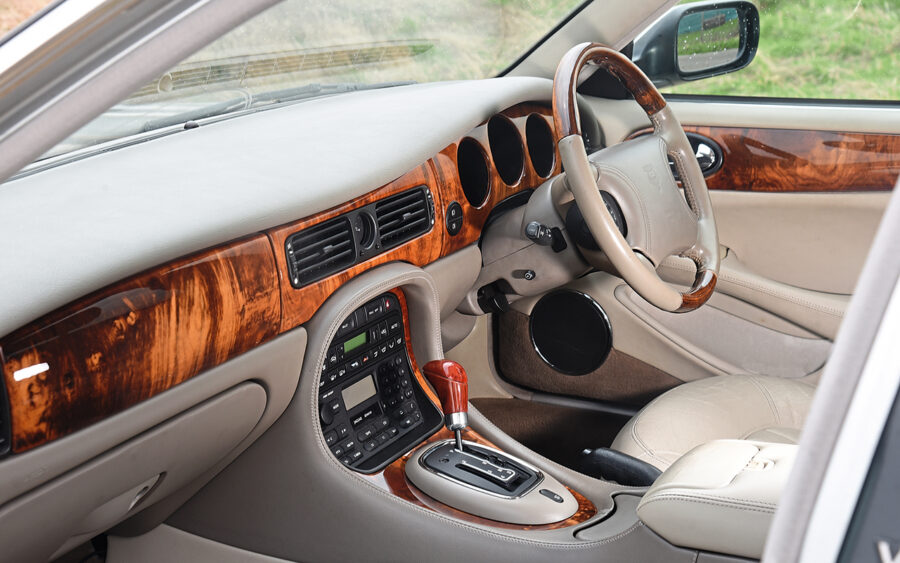
The first car to be available with the new motor was the X100 XK8 from 1996, but Jaguar’s engineers had also developed a V8-engined XJ (codenamed the X308) which arrived a year later. With strong sales showing the design was popular, it was a no-brainer to reuse the same exterior as the X300. The only external updates were a restyled grille, larger front and rear bumpers that incorporated elliptical front flashers, clear-lens headlamps, crystal-look rear light clusters and a broader number plate finisher, while 17in rims were now standard on the entry models.
Yet it was all change under the skin. The front of the engine frame was stiffened, the B-post reinforced and 30 per cent of the car’s underbody was changed. The amount of high-strength steel in the body was also doubled. The central bearing of the divided propellor was repositioned while to sharpen the car’s handling, the same front suspension as the XK8’s was added, albeit with a revised kingpin angle.
Since the V8 was more compact than the AJ16 and V12, it enabled a second bulkhead in the engine bay which not only provided an extra barrier against noise and vibration in the cabin, but allowed important parts of the electrical system to be fitted out of harm’s way behind it. From the outset, the obviously named XJ8 was available with 3.2 or 4.0 litres (producing 240 and 290bhp respectively) plus there was a supercharged version of the latter for the XJR which developed a meaty 300bhp.
Amazingly, and like the rest of the X308 range, the XJR was remarkably good value; at £50,675 it was a whopping £11,500 cheaper than the Audi S8. At the other end of the scale, by being priced at £34,475 the entry 3.2 Sport made it a rival to more mainstream models.
Admittedly, at over £62k, the top-of-the-range Daimler Super V8 was the reserve of the landed gentry or lottery winners only; with the same supercharged 4.0 V8 as the XJR, it was just as fast. Plus, the interior boasted higher-grade materials which meant in terms of opulence, it could rival a £200,000 Bentley Continental.
Put all of this together and it’s small wonder the X308 became one of the best-selling generations of XJ by yearly average; with 123,230 produced between late 1997 and 2002, the resultant 24,646 was a better yearly average than the XJ40’s despite it selling 208,733. Only the original Series 1 and the X300 beat the X308 by a small margin.
Yet the X308’s impact on Jaguar is greater than just sales figures since it clearly influenced later models. These include the 2001 X-Type that’s clearly a small X308, plus its own replacement the X350 XJ, which arrived a year later. Although they shared many of the same familiar characteristics – mainly quad headlights and a broad grille – they were very different cars. Whereas the X308 was compact with elegant proportions, the newer car was longer, taller and nowhere near as graceful. It may have been a better performer thanks to its aluminium construction but the X350 was never as popular as its predecessor, with only 83,500 produced.
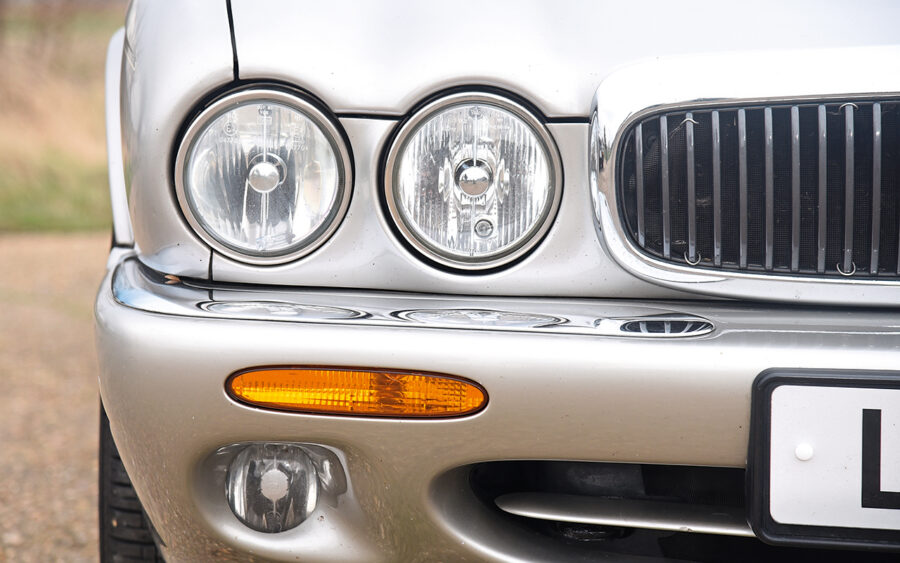
Jaguar XJ8 (X308) timeline
1989
Jaguar XJ90 concept cancelled as Ford takes the reins but its influence extends to the X300-generaion XJ6
1991
Work begins on a replacement for the Jaguar XJ40 – the X300 XJ – with total development costs to reach £200m
1994
X300 XJ arrives with new, retro look but many shared components and engines from the XJ40
1996
All-new AJV8 engine debuts in the Jaguar XK8 (X100)
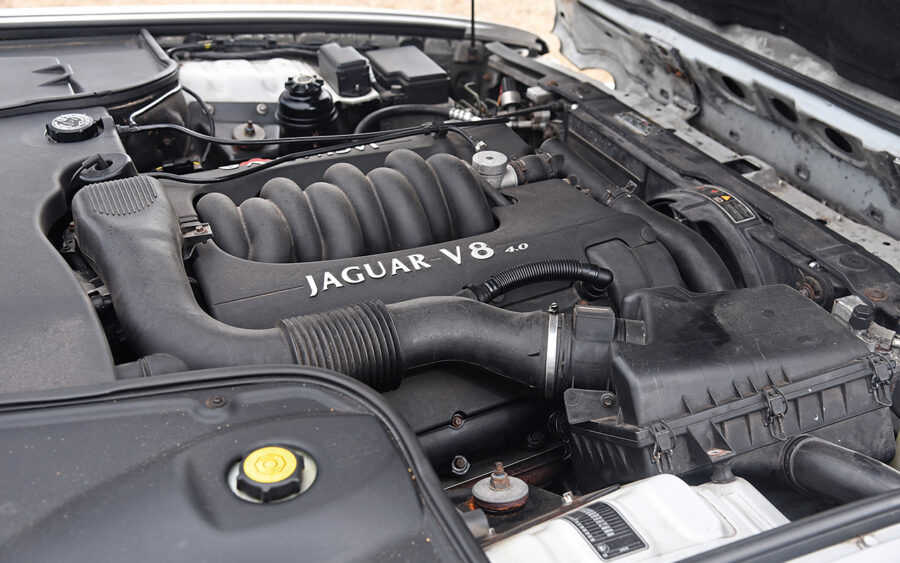
1997
Exclusively V8-powered Jaguar XJ8 (X308) arrives on sale with detail styling changes over the outgoing X300 model
Performance-orientated Jaguar XJR arrives powered by a 300bhp supercharged V8
2002
X308 XJ8 goes off sale after a production run of 123,230 examples
All-aluminium X350 XJ arrives to replace the X308

